🧵regarding Some of the I...

Highlights
- 🧵regarding some of the instruments used for debridement of the soft tissues.
For those familiar with my threads, we will also introduce 2 new instruments: the curette and the rongeur.
We will go over some characteristics of each, and as usual, just a little history.
(1/ )
 (View Tweet)
(View Tweet)
- We'll start with the scalpel, which has always been thought of as something useful for debridement. For smaller things they're fine.
Disadvantages include more bleeding and increased risk of injury to those scrubbed in.
For larger debridements, there are usually better options.
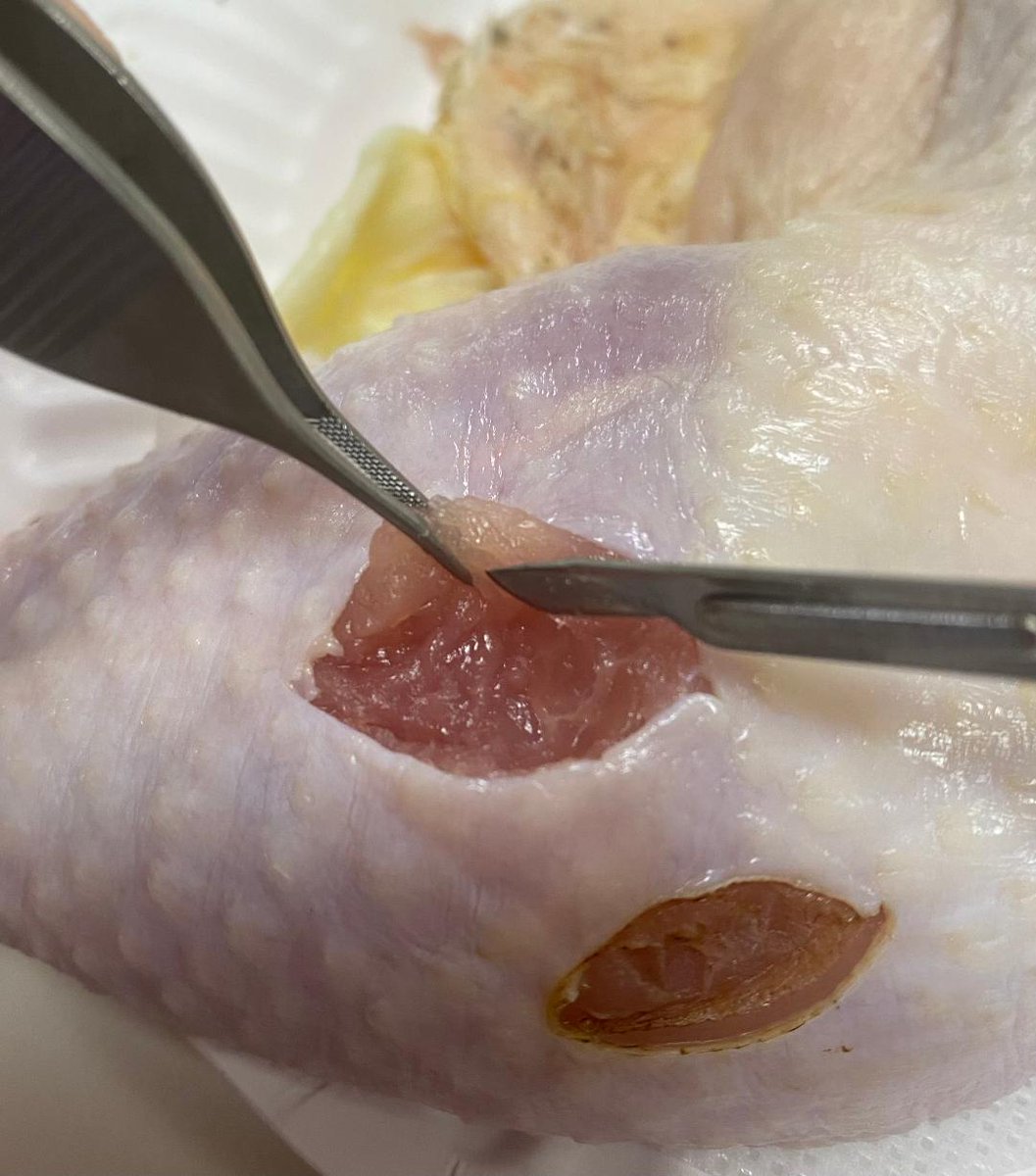 (View Tweet)
(View Tweet)
- These are the same picture, but the one on the R shows some tissue that I'd like to debride (I'll have several pictures of this kind in the thread).
The tissue is superficial and is softer than the underlying 'good' tissue. Scissors are a good choice here.

 (View Tweet)
(View Tweet)
- Here, the 'bad' tissue is relatively superficial, and using scissors is easiest.
Of note, scissors are also quite good when the 'good' and 'bad' tissues are of similar consistencies. You will also notice this in regular life when cooking -sometimes scissors are just easier. https://t.co/sZZAfVKgjd (View Tweet)
- Often, the tissue is firm enough that it's difficult to cut with scissors, and the good tissue is vascular enough that using a scalpel would be too bloody.
A Bovie is a good option here. It cuts through tissue and provides better hemostasis. I will debride the circled area next.

 (View Tweet)
(View Tweet)
- The majority of my debridements are done with the Bovie. I'll usually switch to other things only when I need to.
As I noted before, it cuts tissue well and provides some hemostasis. It also is harder to injure oneself with it. They now often also have a smoke evacuator. https://t.co/p1bNhmwo48 (View Tweet)
- The curette is a spoon-like tool that is used when you want to scrape something off of a tissue surface.
Curettes have sharper edges around the circumference, which allows you to scrape off even tissue that is densely adherent to the underlying structures.

 (View Tweet)
(View Tweet)
- Scraping instruments are obviously nothing new, and have been around since ancient times.
The word 'curette' is French and is derived from 'curer', which has been interpreted as 'to cure' or 'to cleanse'. The word started appearing in French surgical texts in the early 1600's.
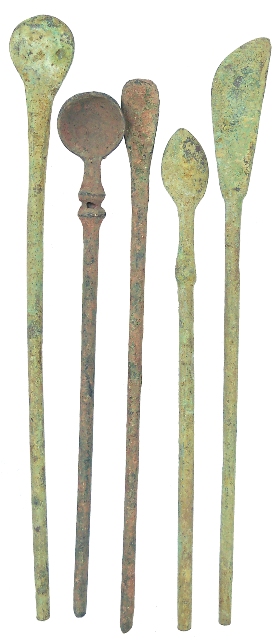
 (View Tweet)
(View Tweet)
- Here is an example of some tissue that is amenable to removal with a curette.
The two pictures below are the same. The one on the right has a circle around the tissue that I'll be curetting off of the underlying bone.

 (View Tweet)
(View Tweet)
- Here, I am curetting off the tissue I showed in the previous slide.
Not that for the curette to work, the underlying tissue needs to be relatively robust. You can't curette off flimsy tissue that is attached to other flimsy tissue. https://t.co/fAxHfqfeBR (View Tweet)
- If the area to be debrided by curettage has a large volume of tissue coming off, it will quickly fill up and occlude the curette (L picture). You will then have to constantly clean it off.
There are curettes of all sizes with a hollow center (R picture) to prevent this.

 (View Tweet)
(View Tweet)
- Another useful instrument for debridement is the rongeur. Like the curette, the rongeur comes in a wide variety of shapes and sizes. We will look at this one, since it is the one I have access to.
The word 'rongeur' is also French and means 'to gnaw'.
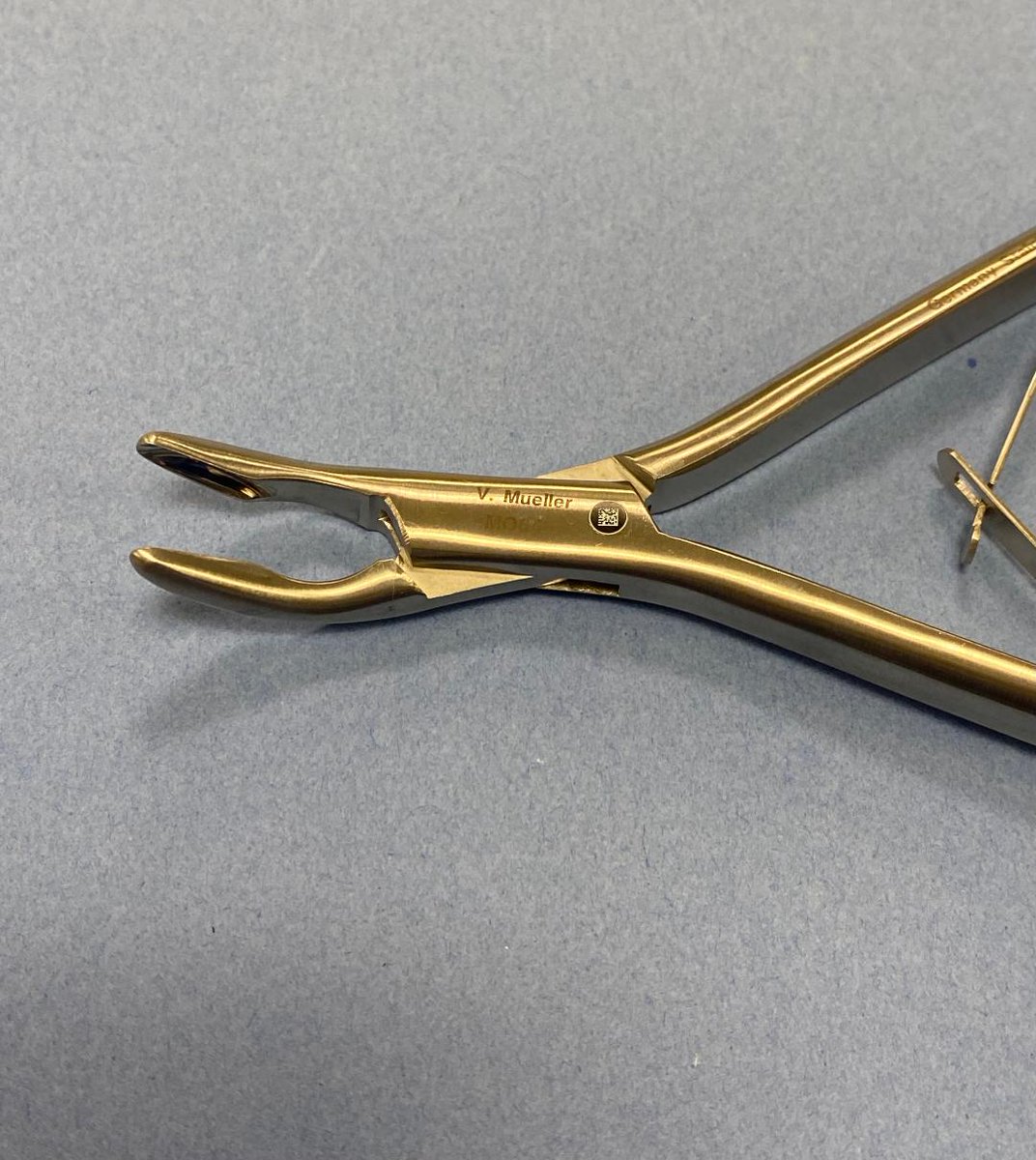
 (View Tweet)
(View Tweet)
- Rongeurs have jaws of various shapes that have sharp edges that are used to grab and pull off tissue, as implied by the definition of the word ("to gnaw").
Two other examples are seen here. The upper R image shows a Leksell rongeur; the lower R image shows a Kerrison rongeur.


 (View Tweet)
(View Tweet)
- Rongeurs are particularly useful for picking tissues out of holes and crevices, in areas that are hard to get to with other instruments.
Again, the 2 pictures here are the same, with the one on the R showing some tissue I'd like to pick out with a rongeur.
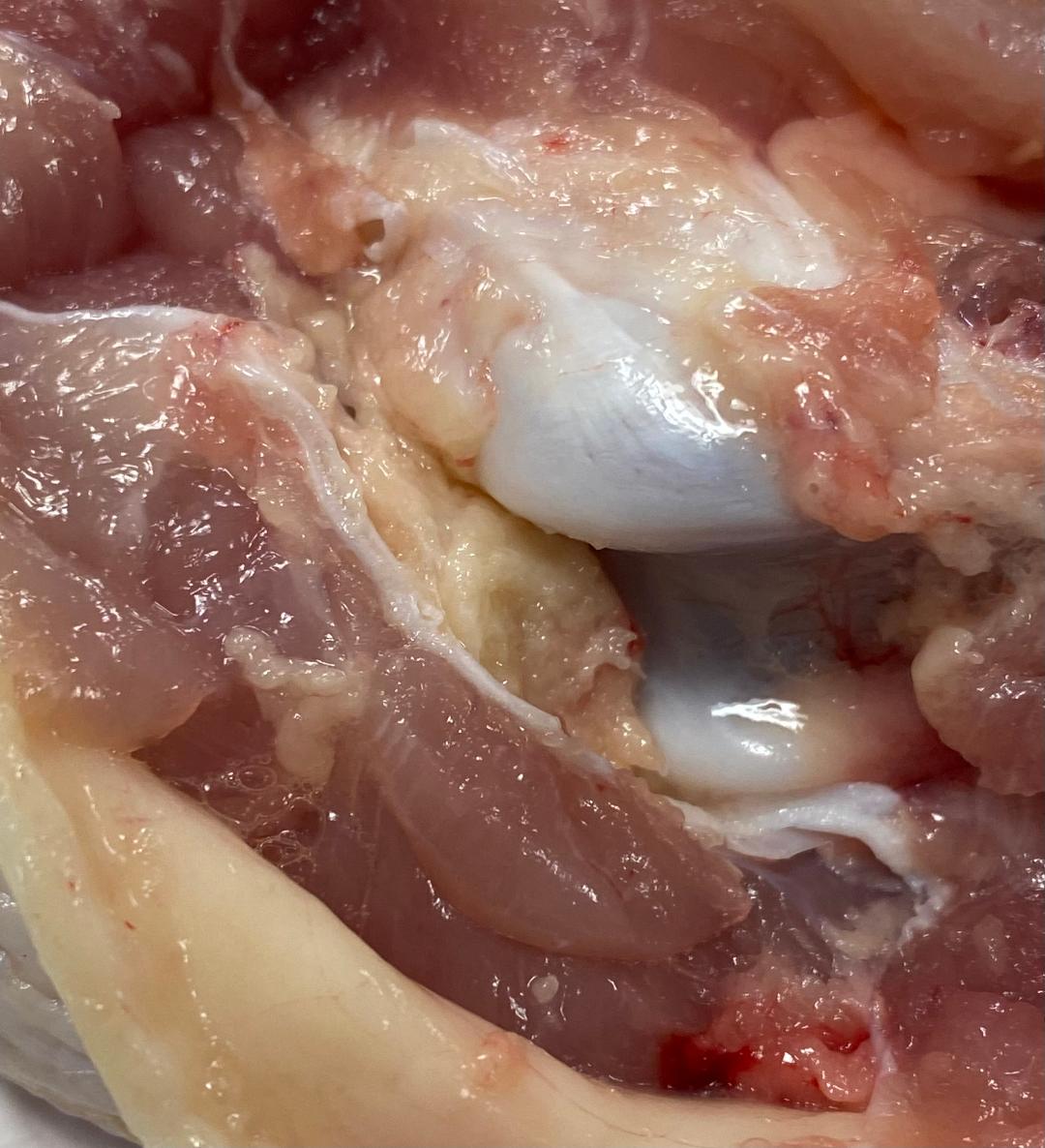
 (View Tweet)
(View Tweet)
- Here I am starting to debride the tissue with a rongeur. I could not have readily done this with a scalpel, scissors or Bovie.
(only part of the debridement is seen due to file size limitations) https://t.co/av1i6xxLoX (View Tweet)
- Rongeurs are probably most commonly used to debride bone.
As long as the rongeur is large enough, it can usually gnaw through most bone (especially the Leksell rongeur, which is even stronger due to its double-action mechanism, which provides more leverage). https://t.co/aQNRGxSrHq (View Tweet)
- Lars Leksell was a Swedish neurosurgeon that worked in Finland during World War II and developed his rongeur for laminectomies in injured soldiers.
Phillip Kerrison was an otologist that developed a tool for mastoid surgery (lower L) that eventually became the Kerrison rongeur.


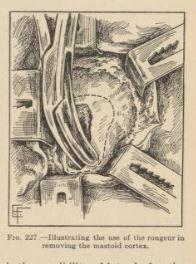
 (View Tweet)
(View Tweet)
- Finally, I'll briefly mention the Versajet, which is a newer tool for debridement. It basically sprays fluid at high velocity, enabling you to shave off superficial tissues.
The Versajet would need its own thread and is harder to get, so I'll leave that one for another day.
⬛️

 (View Tweet)
(View Tweet)

 (View Tweet)
(View Tweet) (View Tweet)
(View Tweet)
 (View Tweet)
(View Tweet)
 (View Tweet)
(View Tweet)
 (View Tweet)
(View Tweet)
 (View Tweet)
(View Tweet)
 (View Tweet)
(View Tweet)
 (View Tweet)
(View Tweet)
 (View Tweet)
(View Tweet)

 (View Tweet)
(View Tweet)
 (View Tweet)
(View Tweet)


 (View Tweet)
(View Tweet)
 (View Tweet)
(View Tweet)